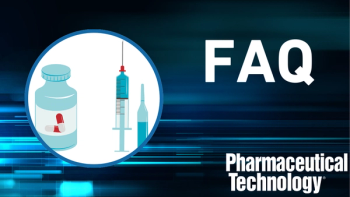
- Pharmaceutical Technology-04-02-2011
- Volume 35
- Issue 4
Global Healthcare on the Ground: Framework Set for Supply-Chain Improvement
PRTM helps to improve supply-chain management and logistics in developing countries.
In recent years, the lethal form of malaria has grown resistant to older drugs used for treatment. Artemisinin-based combination therapies (ACTs) are the most preferred method of treatment for malaria, as designated by the World Health Organization (WHO), because of their reduced likelihood of resistance. However, they can be 10 times more expensive than competing therapies, making them less accessible to the millions of people that need treatment.
Chan Harjivan
PRTM, a management consulting firm, joined The Global Fund to Fight AIDS, Tuberculosis, and Malaria's Affordable Medicines Facility-malaria (AMFm) unit to help develop a framework to enable supply-chain managers to get timely, affordable ACT supplies to the locations where they are needed most. The Global Fund is a public–private partnership that focuses on health financing to prevent and treat HIV/AIDS, tuberculosis, and malaria. The partnership began in July 2010 and ended in December 2010. The goal in developing this framework was to reduce the barriers for effective distribution in resource-constrained areas where malaria is endemic.
The framework used was the Supply Chain Operations Reference model (SCOR, a registered trademark of the Suppy-Chain Council, a global nonprofit organization that works to improve supply-chain performance), which is considered industry best practice for optimizing supply operations in "hard to reach" and resource-constrained geographies throughout the world. The framework has had particular success in the public sector clients by adapting the supply chain practices and metrics of commercial companies to meet the unique needs of the public sector.
Beneficiaries of the project included public and private organizations that procure, store, and distribute health commodities, including essential drugs and medical supplies (e.g., syringes, bandages). The framework enabled these organizations to measure current and historical performance and to prioritize opportunities for improvement, including the identification of and reference to best practices for supply-chain management.
"By allowing users on the ground to diagnose the root cause of performance issues, organizations can make more informed strategic investment decisions, thereby better positioning themselves to streamline and optimize distribution processes," says Chan Harjivan, lead director of the PRTM effort.
He adds, "Improving the effectiveness and efficiency of the supply chain for each organization involved in end-to-end distribution can contribute to public health goals of improved availability and affordability and access to critical health products."
Visits to Tanzania and Niger in September and October 2010 provided a unique opportunity for the team to meet with public and private stakeholders and to identify common challenges. Stakeholder visits included drug manufacturers and importers, distributors, policy makers, grant recipients, ministries of health, and nongovernmental organizations. According to Harjivan, discussions focused on improving supply-chain processes, including how to best place orders with manufacturers, account for inventory, and manage distribution to customers.
Part of the project also assessed metrics contained within the framework to ensure that they could be measured with the data available (e.g., the date and time when an order is received and the date/time when it is shipped). The trips proved to be extremely valuable in further customizing the framework into a valuable tool for supply-chain managers, says Harjivan. The project also empowers local organizations to identify and prioritize issues.
Looking ahead, some of the greatest challenges to be addressed in distributing ACTs throughout developing countries include unpredictable or insufficient funding, which often leads to product rationing for crucial drugs. Adds Harjivan, "Difficulties in determining true consumer demand limits forecasting capabilities and can result in lengthy periods where products are not available to consumers." Another challenges is a lack of adequately skilled and trained personnel in developing countries. Harjivan further notes that, although the framework proposes strategies for dealing with the challenges identified, it's not a complete solution. The benefit of the framework is that users can apply their own knowledge of the environment to develop solutions that are most appropriate for their organization.
Now that the framework design has been completed, the Global Fund is evaluating and developing a strategy for implementation. Tailoring of the framework will be needed for each country in which it will be adopted.
Articles in this issue
over 14 years ago
Pharmaceutical Technology North America, April 2011over 14 years ago
In the Spotlight April 2011over 14 years ago
Health-Reform Controversiesover 14 years ago
Biotechnology Loses Lead in Fundingover 14 years ago
Celebrity Couples to Disuniteover 14 years ago
Report From Chinaover 14 years ago
Scrutinizing the Subvisibleover 14 years ago
When Patience Pays Offover 14 years ago
Advancing Small-Molecule SynthesisNewsletter
Get the essential updates shaping the future of pharma manufacturing and compliance—subscribe today to Pharmaceutical Technology and never miss a breakthrough.





